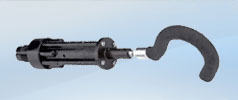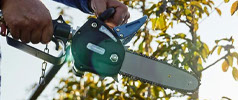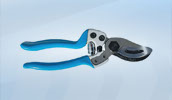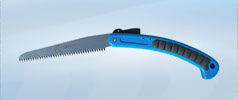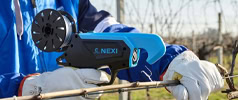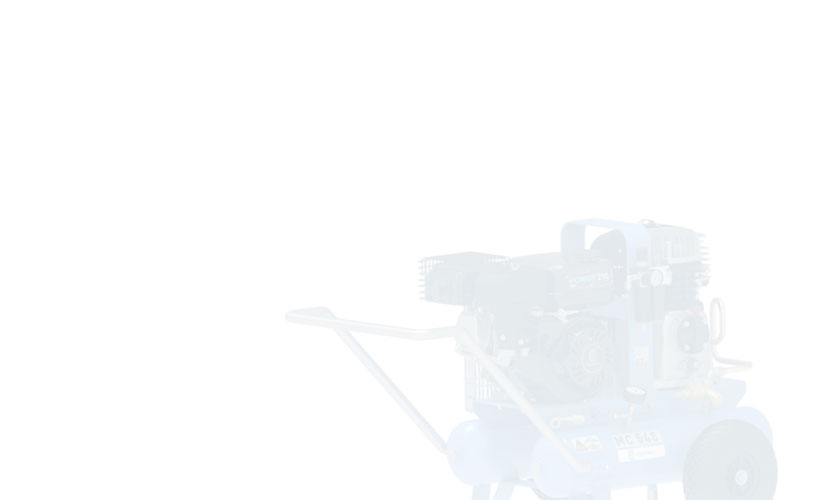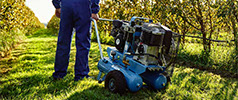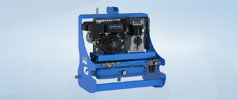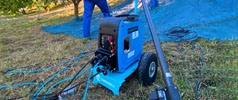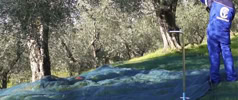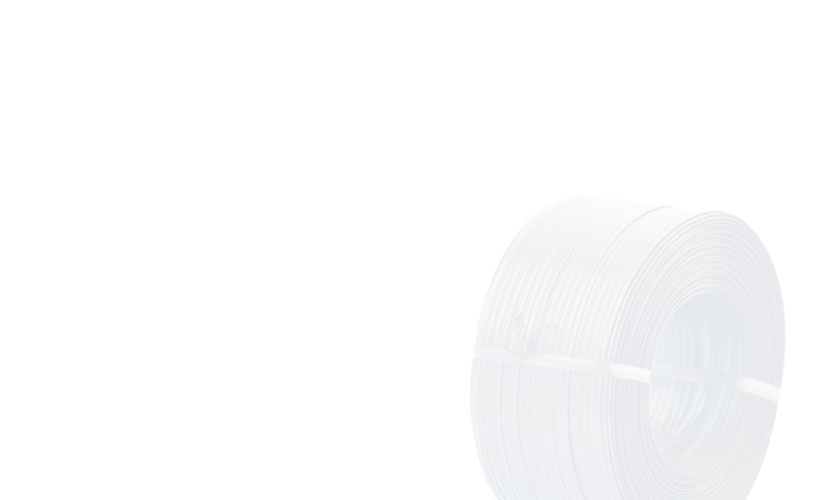Vine is one of the most cultivated plants in the world. It can not only be found in the countryside, in the vineyards of small or big winegrowers, but also in private gardens and even in the cities, on home terraces.
What are the forms of winegrowing? Which is the way to choose them? And what tools are used for pruning? From the sapling to the Guyot, from the cordon to the pergola, here you can find a complete overview.
The vine: an ‘easy’ plant to prune
Vine is an overall unpretentious plant. It requires warm climates, but it can adapt to climatic conditions, if they are not extreme. It prefers soils without stagnant humidity and needs a lot of sun for its fruits to fully ripen. Above all, to improve its quantity and quality, it needs a precise and effective pruning to maintain the breeding method chosen by the winegrower according to his means and resources.
In choosing the most suitable work tools, winegrowers have found in Campagnola, during its first 65 years of activity, a reliable partner, always introducing new efficient and technologically innovative products of high quality onto the agricultural market.
Vine is said to be an easy-to-prune plant, since it generally manages to solve any operators’ evaluation errors in the cut choice. This is thanks to the fact that the one-year-old branches (the shoots) are productive regardless of their length, position, or inclination. Furthermore, their buds are very fertile.
Vite cannot support itself on its own. Therefore, it tends to climb in nature around the stems of other plants, in vineyards around espalier or pergola support structures made of poles (wood, metal, cement) and. When performing winter and summer pruning, it is necessary to preserve the harmony of the vine and maintain the breeding method. This will also allow constant production and facilitate field work and grape harvesting.
The choice of the vine breeding method
The choice of the best form of the vine breeding method must be considered starting from the analysis of the soil (fertility, exposure, altitude, slope, presence of water resources, etc.) and the climatic conditions of the place.
The many varieties of vine (cultivars) are therefore chosen according to the characteristics that are best suited to the soil and to the type of the final production desired: wine or table grapes, quality or quantity.
At this point one can choose the most suitable form of cultivation and the plant density.
Forms of vine training
There are different forms of vine cultivation.
Over the years, with the internalization of agricultural practices and the mechanization of the countryside, espalier forms such as the Guyot, the ‘double inverted’, the cordon’, the Sylvoz with the Casarsa and the ‘simple cordon’ and the G.D.C. (Geneva Double Curtain) have become very widespread.
The height of the vine is one of the criteria for classifying the training methods: low up to 1 m, medium between 1-1.8 m and high above 1.80 m. Another criterion is the direction of the productive shoot: horizontal (tent), oblique (pergolas), vertical (Guyot), or volume development (sapling).
The achievable planting density is considered high (up to 10 thousand plants per hectare), medium (up to 6,000/hectare), or low (between 2,000-4,000 plants/hectare). The kind of pruning is chosen according to the number of buds left on the shoots/noble sprouts: short (spurs with maximum 3 buds), mixed, or long pruning (from 5-6 buds up to over 20).
The sapling method in vine cultivation
The sapling cultivation form, which derives from the Greek viticulture of the classical age, takes its name from the shape of the vine after shape pruning. The trunk is low (30-40 cm) and has 3-4 branches, each one with a pair of spurs. In this case, a simple stake for the trunk is enough, since the vine does not require any support poles and wires. The plant distance can be small, thus obtaining a high density per hectare, but to facilitate the possible passage of agricultural vehicles it is preferable to increase it and create palisade rows. It requires ‘short’ pruning and frequent tipping operations to maintain the growing vegetation.
This system is usually adopted in areas with poor, dry, windy soil and high temperatures. It is typical of the Mediterranean basin, but it can also be found in some particularly cold areas (northern France, Germany).
Guyot, double Guyot or double upside-down vine cultivation
In hilly areas, the Guyot system with mixed pruning and low to high planting density is particularly suitable. It is one of the most widespread and versatile in the world. It has been known since Roman times, although this name was given to it starting from the second half of the nineteenth century and derives from Jules Guyot, who promoted its diffusion by introducing the function of the spur on the stem for the renewal of the productive shoot.
In this form of cultivation, vine supports are needed as well as poles (which must be 2 m high above ground) and wires (at least 3). After shape pruning, the vine can have a height between 50 cm and 1 meter. A spur with 2 buds is left at the top. This will provide the shoots for the productive renewal, while the annual fruiting branch with 8-12 buds, from which the fruiting shoots will develop, is bent horizontally to the side and tied to the lowest wire, in place of the one that fruited the previous year.
It exists, however, in at least three variants: the simple Guyot, the double Guyot, with two parallel fruiting shoots, and the ‘double upside down’, in which two shoots are bent, one on the left and the other on the right of the stem, up to the second wire, instead of a horizontal binding. Furthermore, in the double upside-down system the spur is not always useful, as one of the vigorous shoots, which usually develop from the basal buds of the fruiting branch, can be used for the renewal.
The spurred cordon system
Similar to the Guyot, but suitable for vines with more fertile basal buds and plants with medium-high density, it is the so-called ‘spurred cordon’. Unlike the Guyot system, the branch (cordon) bent and anchored to the first supporting wire is permanent, and the annual fruiting shoots will then develop from it. In fact, the cordon is a horizontal extension of the vine. In this system, ‘short’ spur pruning is used with shortened shoots and renewal spurs wth a maximum of three buds, while during shaping pruning greater attention must be paid to ensure that the branch destined to become a permanent cordon is strengthened in the right way. An important advantage of the spurred cordon is that the system is highly mechanizable.
Sylvoz vine cultivation
The Sylvoz cultivation method and its variants, however, require ‘mixed’, or even ‘long’, pruning. The resulting greater vegetative and productive development needs adequate climatic conditions and soil as well as good irrigation to support the plant.
Also in this case there is a permanent horizontal cordon, which is even 1.5 m long and anchored to the second wire. The annual fruiting sprouts, however, are about 50-80 cm long and grow in a descending position, as they are curved downwards and tied to the first wire, stretched under the cordon. The height of the vertical trunk reaches 1.60 m.
Casarsa vine cultivation
‘Casarsa’ is a cultivation form derived from Sylvoz, therefore with a permanent horizontal cordon. However, the fruiting branches are not tied so they bend downwards in a more accentuated manner. For this reason, it is more suitable for ascending vines. It tends to be a form that is no longer in use, as the quality of the grapes is lower. Furthermore, it requires significant summer pruning interventions with more costly management.
Pergola vine cultivation (also for private gardens)
It is the form of cultivation traditionally preferred by those who have few vines, or a private garden to shade near their home, therefore it also has ornamental purposes.
So, we should talk about pergolas, since it is a group of simple, double, closed, open, etc. systems characterized by the presence of a horizontal or inclined frame, also called roof, formed by crosspieces and wires arranged in double series orthogonally. The fruiting branches or cordons stay right on the ‘roof’. The log reaches a height of 1.3 – 2 meters. It is obviously used with vines that can have large dimensions and especially where there is a need to preserve the bunches, keeping them away from ground and humidity thanks to a greater ventilation. It is suitable for low intensity plantings and requires ‘long’ spur pruning. The pruning system is, however, the classic Guyot, but requires an extra year, so that the stem becomes higher. The fruiting sprout is obtained from the shoot formed in the terminal part of the more developed one, brought under the ‘roof’ in the second year of cultivation.
The tent system for table grapes
The ‘roofs’ of the pergolas are generally interrupted, therefore becoming open, to facilitate the air circulation. When the vegetation is continuous and the structure is uninterrupted, the cultivation method is called ‘tent’. When the vine starts producing grapes, it is higher than in the pergola (up to 2.2 meters) and from each stem 4 fruiting sprouts with 8-10 buds each branch out in a horizontal position. They form a cross, so as to cover the entire net of wires supported by the poles.
Particularly used to produce table grapes, it is widespread in southern Italy and other hot countries (Spain, Argentina). It allows a clear separation between the vegetative part, above the roof, and the grape bunches, which remain under the pergola, protected from the direct sunlight.
The cultivation of vines in pots on terraces in the cities
The roots of the vine go deep, even if the largest part remains close to the surface. Nonetheless, the habit of growing it in pots to embellish domestic gardens or terraces in the cities is spreading, perhaps for the satisfaction of being able to taste self-produced grapes of particularly tasty table varieties, from strawberry grapes to sultanas. Obviously, we need resistant big pots, both in diameter and depth, so as not to have to put the plant into another one after a few years. If it is not possible to guarantee a support structure fixed to a wall, which the plant can climb to support itself, then it is appropriate to choose the sapling method.
You must then fill the pot with good soil that facilitates drainage and does not create stagnation, which is harmful to the roots and the health of the plant. Obviously, you need to irrigate with little water, but often enough, and fertilize a couple of times a year with preferably dry organic fertilizer.
What must not be missing is regularity in pruning, to contain the vigor of the plant and leave few buds on the shoots, so as to ensure perhaps fewer bunches, but better grapes.
The most suitable tools to use in vineyards and gardens
All work in the vineyard requires a strong manual component, such as removing side shoots, tying shoots, pruning, etc. All this means greater costs and effort. Therefore, the use of mechanical equipment is the solution.
Generally, large diameter cuts are not necessary, but the operators’ upper limbs and ligaments are stressed by the high number of repetitive operations in a short time. Therefore, it is essential that shears and tying tools are fitted with ergonomic handles, as well as that they are good quality tools, to carry out the work in the best way and with the least effort.
Apart from for a small quantity of plants for domestic consumption, it would be advisable to consider the use of battery-powered tools, such as those in our Campagnola catalogue, which today are even more efficient and reliable. They are fitted with a protection device against any accidental cut of the vineyard wire and ensure a good working autonomy. Finally, in intensive vineyard systems, pneumatic tools guarantee a high performance while offering greater power and handiness even when mounted on extension poles.
Campagnola tools
In our Campagnola catalog there are tools, which have been constantly improved over the course of 65 years of design and manufacture, always searching for the best quality, which is typical of the most prestigious Made in Italy.
For a specific task in the vineyard, we wish to highlight our Nexi plug-in electric tying tool (GREEN Line), which can be used with standard, bio-photodegradable or paper twist tie. It reaches a speed of 80 tying operations per minute and performs 6 different tying modes. It is fitted with a high-performance lithium plugged-in battery, which, however, can also be removed and inserted into a holster, attached to the operator’s belt thanks to an adapter and a 1.3 m long cable (patent of Campagnola). In this way the weight is just 766 grams, making Nexi extremely lightweight as well as easy to handle, fast and precise. Its battery can also be used for our STARK M shear or T-CAT M chain pruner.
Campagnola offers various shears carrying out clean and precise cuts.
The hand shears of the PROFESSIONAL Line have hot-forged steel blades and ergonomic handles. They are lightweight (around 230 grams) and perform cuts up to 25-28 millimeters in diameter. To this range belong traditional vineyard shears with curved blade (S1), or short blade (C3), as well as double-cut models (S2) or curved anvil-cut ones (S6).
The offer of the most suitable plug-in lithium battery shears for vineyard includes Speedy (GREEN Line), 890 grams including a 2.0 Ah battery. It can cut branches of approximately 25 mm in diameter and has an autonomy of 2-3 hours per battery charge thanks to its brushless motor. It is fitted with a greaser for lubricating the blades. These can be totally (100%) or partially (70%) opened.
If you are looking for a greater performance (cuts up to 32 mm in diameter), you can find Stark M in our GREEN Line. It is fitted with a trigger with the blade quick opening function and an LCD display to control the number of cuts carried out as well as the remaining battery charge level. Its weight is 915 grams, but it can be reduced to just 673 grams, since the 2.5 Ah battery of Stark M is removable and compatible with the adapter, cable and holster which can be used for Nexi and other Campagnola tools.
The battery-powered shears SL 23 and SL 32 of our SMART Line are more suitable for a less intensive use.
Finally, for professional winegrowers there are pneumatic shears models, powered by engine-driven compressors, also in the tractor-mounted version, and PTO compressors. The pneumatic shears of our PROFESSIONAL Line are endowed with a body made of technopolymer and blades made of high resistance forged steel. They are characterized by the absence of any kickback effect as well as by their low weight, easy handling and high efficiency even in case of intensive and prolonged use.
Our Star 30 model, produced in a specific version for vineyard pruning, is ideal for those who have small hands, as it offers a double-piston solution which means a handle with a small diameter (42 mm), while maintaining a great cutting capacity. Our Victory model has a greater performance (cuts up to 32 mm). It is even less tiring for the operator, as it is made of technopolymer with carbon fibers and weighs only 510 grams. It requires a very simple maintenance.
Our Campagnola catalogue is also available on our website and shows many other pruning tools and related accessories for the needs of every farmer.










